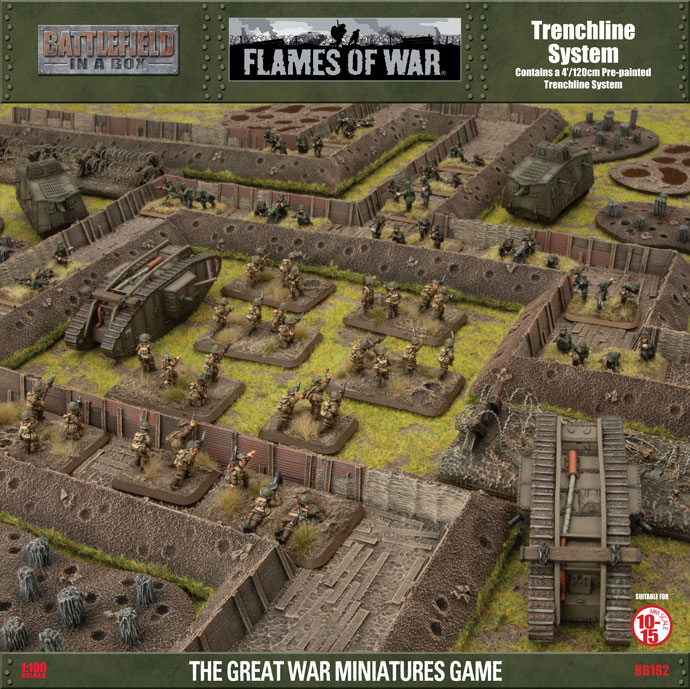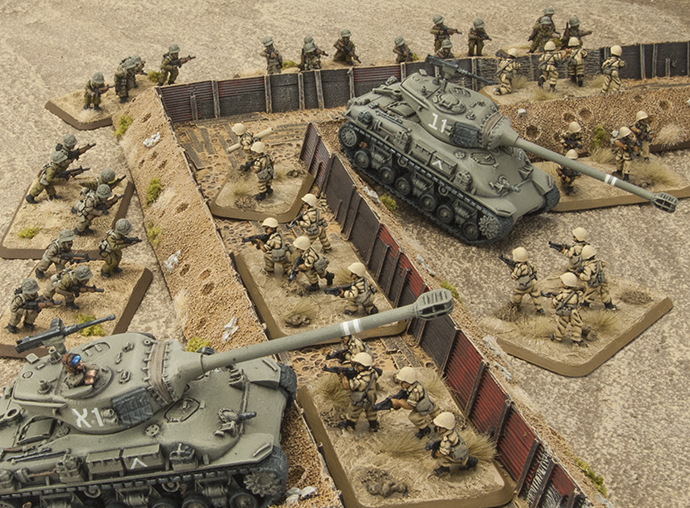|
|
|
|
Products mentioned in this Article
--None--
|
|
|
|
|
|
|
|
|
 |
|
|

|
Preparing For A Fight
Adding Trenches to Flames Of War
by Mike Haught
Trenches were a big part of WWI, but they also made some dramatic appearances in WWII as well. World War II has a reputation for being a lot more dynamic than its predecessor. However, as the battle lines began to firm up, trenches were sometimes dug to hold ground against enemy attacks.
Checkout the Trenchline (BB182) spotlight...
|
This was true in places like Finland along the Mannerheim Line, where the Finns dug a somewhat contiguous line across the Karellian peninsula. Pillboxes and reinforced mortar pits supported the line from behind. The line proved difficult for the Soviets, who had to bring up 152mm weapons to crack open gaps and out flank the line.
|
|
| Similarly, the Soviets established defensive networks along their frontier before Operation Barbarossa, the invasion of the USSR. These fortified positions were much larger than your typical stongpoint and had integrated trenches and bunker systems. Later, they formed defensive networks around vital cities and locations such as Leningrad and Kursk, which helped repel German attacks. |
| Trench lines also played an important role in North Africa, such as at Tobruk where British and Commonwealth forces dug in to hold the town against Rommel’s Deutches Afrika Korps. The Germans and Italians had difficulty dealing with the stubborn defenders and had to dedicate a good amount of firepower and reserves to deal with it, something they could hardly afford when trying to reach the Suez Canal. |
|
|
In 1944, the Germans dug a series of trench lines to enhance
their manpower holding the eastern front. Such was the case at Orsha, where the
Germans established a layered defence network akin to what you’d see in the
First World War. The Soviets were worried enough about the defences there, that
they dedicated special shock units to deal with them, rather than try and force
them with tanks and regular infantry.
|
| Trenches were not only the cornerstone of defensive positions in World War 2, but also in the fighting across the Sinai Desert and Golan Heights in 1967. Israeli tanks and infantry assauled the "Rafah Gap" in their drive towards the Suez Canal, overcoming minefields, barbed wire and dug-in infantry. |
 |
|
In Flames Of War
While normal Flames Of War missions set in World War II do not
include trenches, you can add them to your table if you like as terrain
features. Keep in mind that doing so will have an impact on the game, so
make sure that you run it by your opponent before getting started.
For some missions, how and where to place the trenches is pretty
straight forward. For example, placing them in the defender’s half of
the table in a mission like No Retreat or Hold the Line, makes sense.
Other missions, like Breakthrough, can be difficult. In these sorts of
missions, it might be best to either leave them off entirely or place
them before choosing deployment areas, allowing the trenches to
potentially run across both player’s starting areas (representing a
trench-clearing mission, perhaps).
|
Last Updated On Thursday, September 4, 2014 by Chris at Battlefront
|
|
|